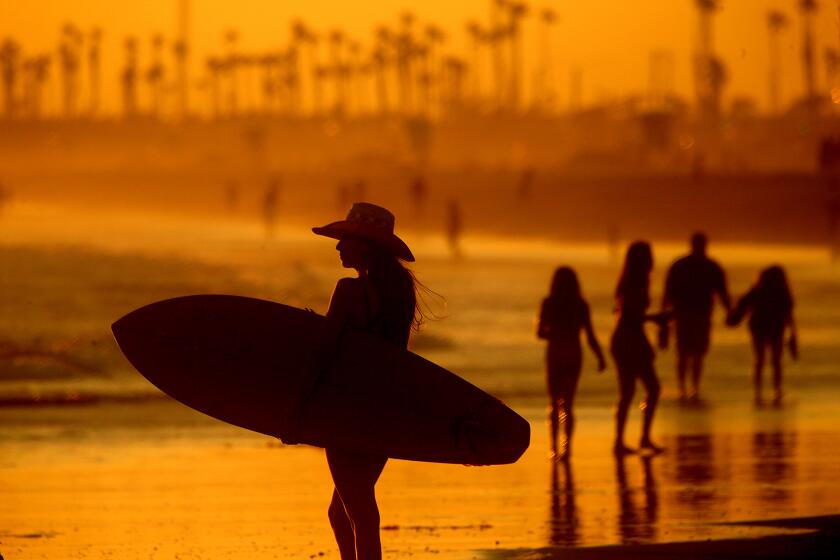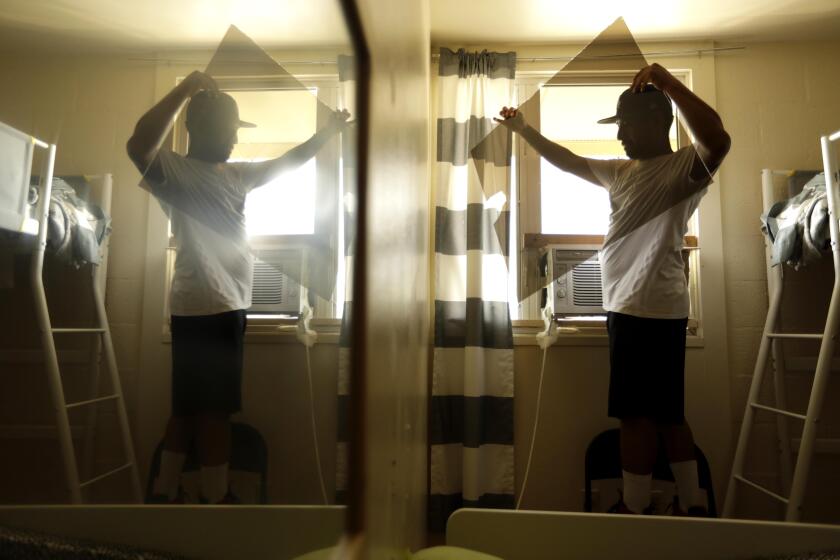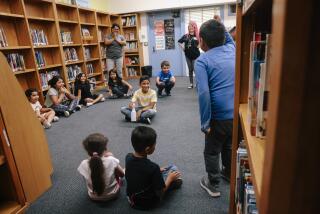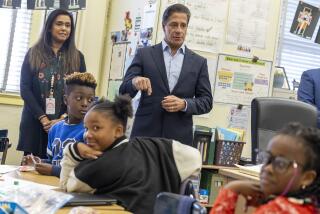Opinion: How we got interminable summer breaks from school — and what we can do about it

- Share via
Our long summer vacation is a relic from an agricultural past when kids were needed for seasonal work on farms — or so we’ve been told. Since that’s no longer the case, we should lay the three-month summer break to rest, right?
We’ve heard that argument over and over again from politicians and other critics of summer vacation and all its parental and educational discontents. The COVID-19 pandemic, which spawned dramatic learning losses for America’s students, only heightened concerns about long summer breaks. Our kids need more school, the reasoning goes, and summer is an obvious time to start.
They might be right about that, but the oft-repeated folk history is wrong. When our common school system began, in the early 19th century, students actually went to school in the summer. And if we want to bring them back today, we’ll need new ways to teach them.
When most Americans lived and worked on farms, the busy seasons were spring and fall — for planting and harvesting, respectively. So kids attended school in the winter and, yes, in the summer, as historian Kenneth Gold has explained.
With extremely hot days increasing due to climate change, we need more accurate weather forecasts for health and survival.
That changed after the Civil War, during America’s great industrial boom. As more families moved into cities, educators worried that summer school terms would make children susceptible to smallpox, diphtheria and the other epidemic diseases that flared in the hotter months.
Educators also argued that keeping children inside during the summer would prevent them from enjoying the bounties of free outdoor play. “Let Mary run and be as hedonist as she pleases; let Tommy roll in the mud,” a Massachusetts observer wrote. “They will be all the better for it, more hardy, blooming, and vigorous when vacation is over.”
There was just one problem: America’s cities were filthy. Despite the romantic nods to nature and health, children who lived in urban areas were more likely to encounter grime and disease and, if left unsupervised, get into other kinds of trouble as well.
“Scores of the children will be seen sitting listlessly on the steps of the tenements or playing half-hearted games on the streets,” a New Yorker worried of city summers in 1903. “Many will be seen pitching pennies, or at games of cards, or playing craps. ... The sight of boys stealing fruit is not infrequent.”
Enter the “vacation school,” which early 20th century reformers touted as an antidote to the boredom and danger of the streets. Prefiguring today’s summer school advocates, who note that poor kids in particular lose academic skills during the summer, one advocate contended that vacation schools would “prevent the demoralizing effect of the long weeks of idleness.”
But they shouldn’t simply repeat what kids did during the academic year, she added. To the contrary, vacation schools would also relieve the torpor and boredom of “regular” school. “Pupils were allowed the freedom of the halls; they played bean bag, swung Indian clubs, danced, sang, and marched,” a Denver superintendent wrote in praising his city’s vacation schools in 1902.
As the 20th century continued, however, vacation schools lost their alternative edge. They evolved into summer school, which provided remedial instruction for kids who fell behind. And they also provided academic credit, subjecting them to all of the bureaucratic rules of regular school.
How can city officials help save lives during heat waves? Make cooling a requirement for habitation, like it is already is for heating during cold weather.
That gave summer school a negative taint that it has never lost. If we continue to treat summer school as an extension of regular school, we’ll reinforce the stigma attached to summer school and the kids who attend it.
“Why should they have to sit in a building and do math all day while their higher-income peers are off in some fancy camp?” asked Rand Corp. researcher Catherine Augustine, who studies summer education.
It’s a good question, and there’s only one answer: Summer school has to provide the kind of enrichment activities that well-to-do kids already receive in privately run summer camps and schools. Taking a page from the vacation school example, we should imagine it as a respite from the academic year rather than simply a recapitulation or extension of it.
Some of that is already happening. In Orange County, Fla., summer schools are providing music and art enrichment alongside academic instruction; in Texas, they teach canoeing and swimming.
Much of this activity is funded by federal COVID aid to schools, 20% of which must be used to combat learning loss. That shouldn’t be the only goal, however. Indeed, the most successful summer schools will be the ones that look the least like regular school.
We would also need to bring teachers aboard, which might be the biggest challenge of all. Exhausted and demoralized in the wake of the pandemic, most teachers have been cool to the idea of summer school.
But maybe, just maybe, a new take on summer schooling could connect more teachers with the passion and idealism that brought them into education in the first place. Our kids went to school in the summer when the nation was young. With the right approach — and the right people to teach them — they can do so again.
Jonathan Zimmerman teaches education and history at the University of Pennsylvania. He is the author of “Whose America? Culture Wars in the Public Schools.”
More to Read
A cure for the common opinion
Get thought-provoking perspectives with our weekly newsletter.
You may occasionally receive promotional content from the Los Angeles Times.












